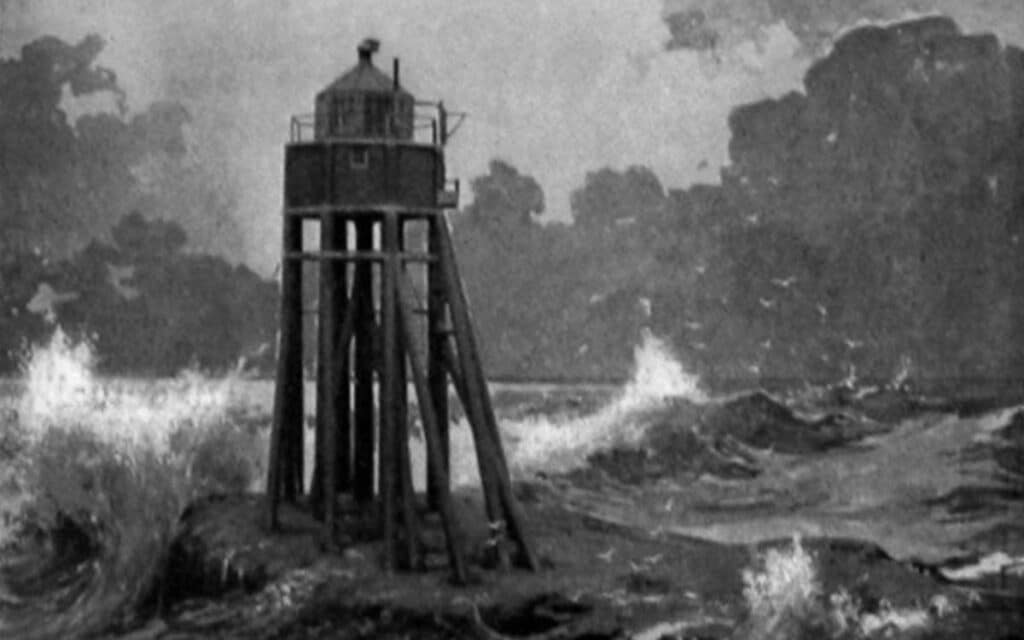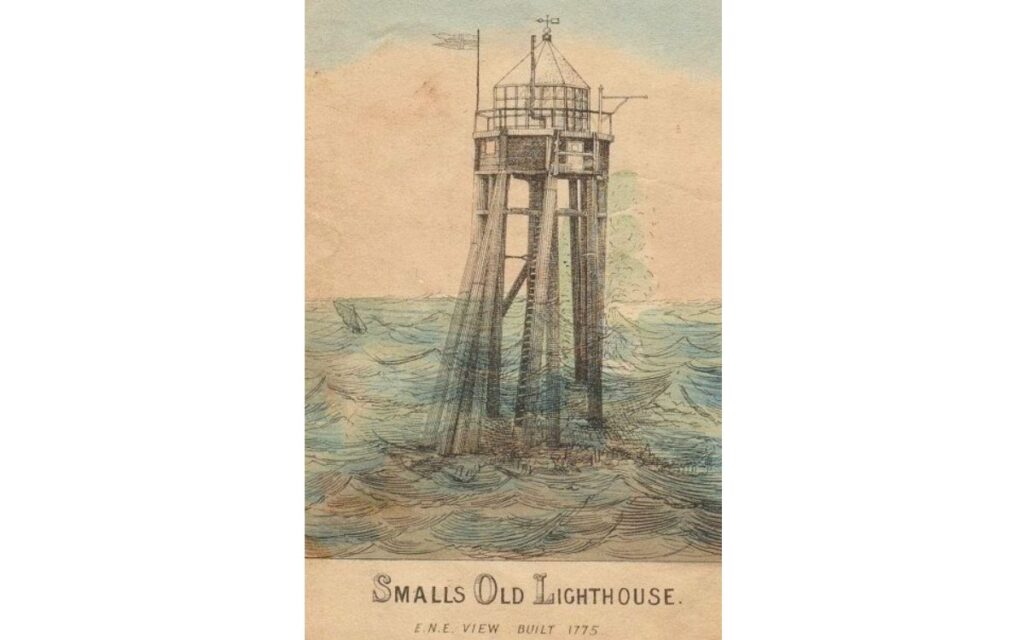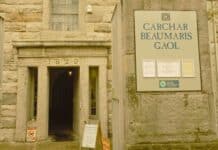Lighthouses were lonely, isolated places. Imagine living alone in one with a dead body? LES HEWITT tells us the ghastly tale of Smalls Lighthouse in Wales.

In today’s technological digital age, the majority of lighthouses are now fully automated. Modern GPS has also all but eliminated the requirements for a traditional lighthouse keeper. In a bygone age though, it was one of the most fraught professions that anyone could enter into.
Back in the early 1970s, the TV trio of The Goodies touched on this subject matter in one of their hilarious episodes. The group were hired to maintain the fictional Jolly Rock Lighthouse. While Bill Oddie was driven mad by circular shapes, Tim Brooke-Taylor caught the Mumps.
While it may have been played more for laughs, the problem of isolation during a tenure at a lighthouse was a very real problem. Selection of a Lighthouse Keeper was a decision that could not be taken lightly. Extra care and attention to detail were primacy concerns for those in charge.
Even with all this due diligence, there were occasions that the chosen employees would still suffer as a result of their shifts. Keepers usually served weeks or months at a time, mostly in isolation. It required a special type of person in order to fulfill a contract.
Stories of Lighthouse Keepers are probably as mysterious as those of more traditional maritime tales. One notable example came from Eilean Mor in Scotland circa 1901. Three Keepers all disappeared without a bona-fide cause. While there are possible solutions, nothing is certain.
Death at Smalls Lighthouse
Predating this event by almost a century was the bizarre circumstances that befell one poor Keeper at the Smalls Lighthouse in Pembrokeshire, Wales. The Lighthouse had an operating crew of two. On this fateful rota, those two men were Thomas Howell and his namesake, Griffith. Neither man had any time for the other. It has been proposed that they outright hated each other. More than once, they had openly argued in public. Why these two were paired in the same lighthouse at the same time is anyone’s guess.
Not long into their stint, Griffith began to feel unwell. Howell put his disdain for his colleague aside in order to administer first aid. This did little to alleviate Griffith. His illness steadily became worse. Realising that his efforts were futile, Howells decided to ignite the distress beacon. The climate conditions on the Irish Sea are often notorious at the best of times. On this occasion, the gales were even more pronounced. Any passing ship seeing the beacon would have had an even harder task landing close enough to render assistance.

This added delay proved too much for Griffith, who passed away before any help could come. As far as he was concerned, Howells’ problems had only just begun. There he was, marooned on a lighthouse with a well-known rival who was now deceased. In his mind, it would only be natural that he would be accused of murder.
Committing the remains to the sea would have just cemented conclusions to the general public. Rather than feed that suspicion, Howells decided to keep hold of the body, perhaps as proof he had nothing to do with the keeper’s death. There was little in the way of storage for a corpse, so Howells saw no other option than to lash it to the exterior of their quarters. A basic wooden hut.
The storms that originally delayed any help that may or may not have been available did not relent even then. As time passed, Griffith began to decay. Howell grew more and more obsessed with the notion that he was being watched. Eventually, this became too much for him to bear, so he sacrificed some of the interior walls to make a coffin.
This crude construction was hardly adequate when pitted against the raging storms that had continued on for an eternity. It didn’t take too long for the makeshift coffin to come apart. All repairs were nothing more than a temporary fix. Eventually, the lack of resources available to Howell took their toll. There was simply nothing substantial to hand. It must have been like putting a plaster on a gaping wound.
The inevitable happened and the casket totally gave way. Griffith’s arms broke free and began to adhere to the lashing winds. From inside the hut, Howell could see nothing else but a flailing arm of a corpse, occasionally colliding with the window itself.
‘Tormented for months from the grave’
For weeks, possibly even months, Howell seemed to be tormented from beyond the grave. Night after night, day after week, the bony hand would continue its grisly work. Howell began to imagine hearing Griffith’s voice. Summoning him to join him. The gestures of then hands all but beckoning the unstable occupant.
Ships that came within sight of the distress beacon could not land on the island. All were forced to continue onwards. More than one of these also claimed to have seen someone on the ledge of the lighthouse, possibly trying to attract attention.
Howell was eventually rescued, but not before his mind had totally gone. All that time alone with the corpse had completed its otherworldly job with great efficiency. By this time, it was likely that Howell was a nervous, gibbering wreck that probably would not want to go anywhere near a lighthouse for as long as he lived.
There was one positive outcome to all of this. A traditional lighthouse crew would be increased from two to three. This policy remained until the 1980s when automation took over. Still, this didn’t help those from Eilean Mor.
But that’s a whole different story.







